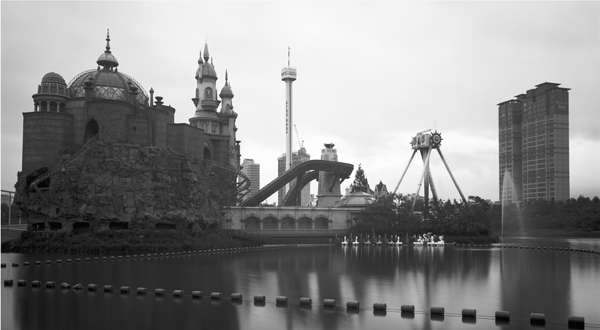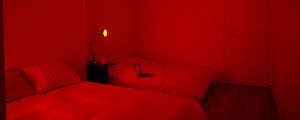There’s a new player on the art gallery scene in Paris that opened shop just two weeks ago: Perception Park. To inaugurate their arrival, they’re putting on an exhibition called “Welcome to” to, well, welcome us… which is nice.
Perception Park have chosen a variety of artists, techniques and media because that is exactly what they’re all about. The aim is to play with the status and identity of the object, as well as the way the viewer perceives the art in front of them.

Taizo Yamamoto’s still life pieces, for example, take the subject out of context and play on repetition. He offers us the graphite reproduction of two shawarmas, an Arabic means of preparation in which meat is placed on a large (usually vertical) spit and grilled over a long period of time. You may recognise it from your local kebab takeaway. Removed from its context, the image is renewed. Stripped of connotation, the meat becomes a totem pole, a high-definition geographical landscape of texture and form.
Artists Sandra Aubry and Sebastian Bourg have been partners in art since 2006. They work with visual puzzles, creating multi-dimensional pieces like their enigmatically-named “MacGuffin ne viendra pas” (MacGuffin won’t come) series. The piece on display at Perception Park, Série Pattern – 1, offers an intriguing collage that challenges perception. If you ever get the chance to see more of their work, I really recommend it. Like Yamamoto, they are inspired by the hybrid nature of the object, and its subsequent deconstruction.

Keen Souhlal likes emptiness. He explains “I believe in showing a new perception of the landscape, in revealing an invisible gap and a strange beauty where people are not used to seeing one.” Fantasmagories and Paysage redréssé both interact, albeit in different ways, with urbanity, nature and space. There is a silence and fragility to his work that complements the loud object-dissection that many of the other artists are preoccupied with.
The first thing you’ll notice upon entering the little gallery are Perception Park’s “Fakir” pieces made using Icelandic sheepskin and metal spikes. Piercing through the soft white, the spikes deconstruct our presumptions about the role and characteristics of the domestic object. I want to stroke them and feel the different textures. Thankfully, Celia reassures me that here at Perception Park the objects are tactile, so I give the spiky-fluffy cushion a good squeeze.

Welcome, Perception Park.
Welcome To is runs at Perception Park in Paris until April6, 2013.
















